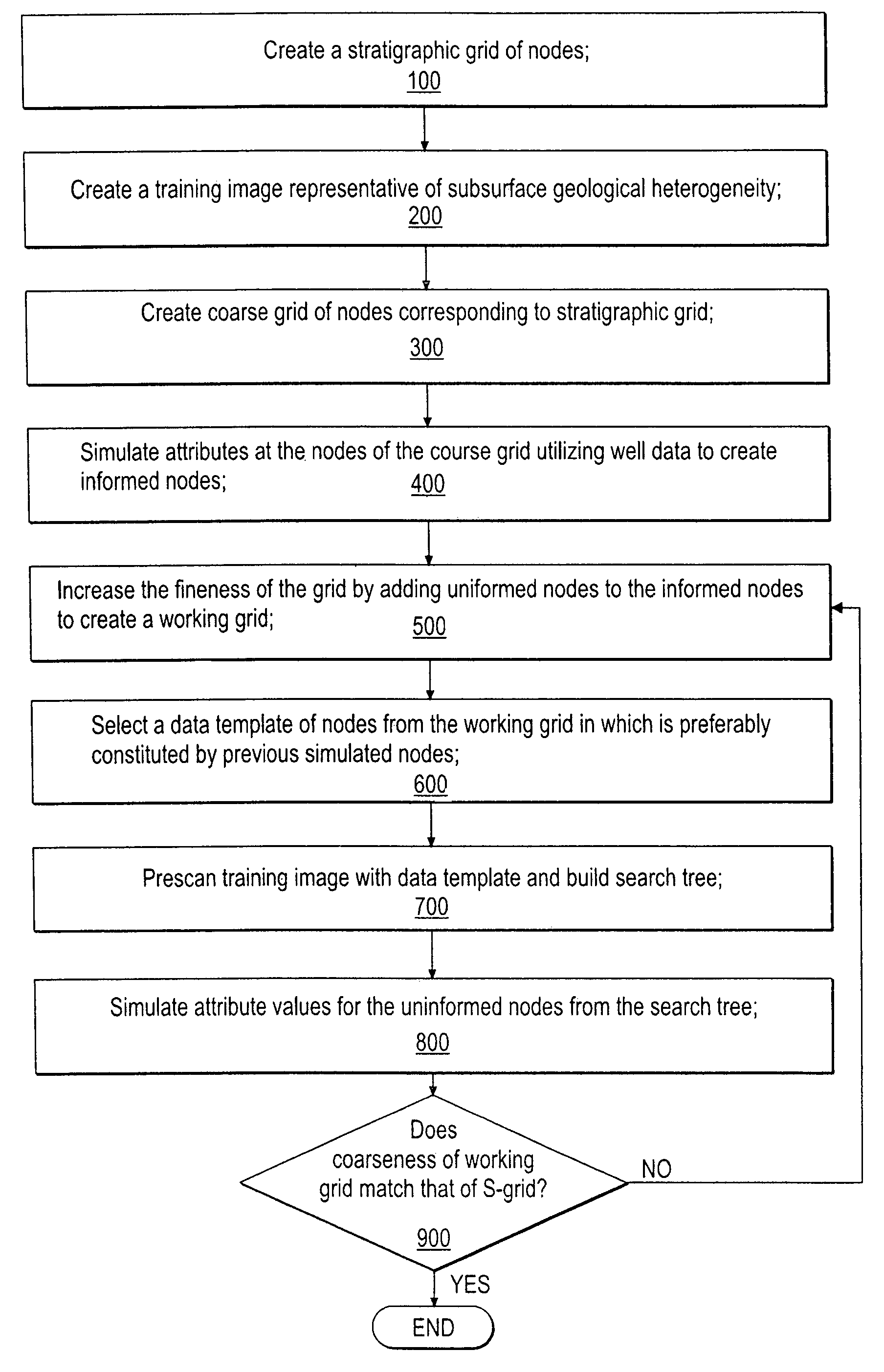Multiple-point statistics (MPS) simulation with enhanced computational efficiency
a multi-point statistics and computational efficiency technology, applied in the field of multi-point statistics simulation with enhanced computational efficiency, can solve the problems of snesim being significantly more cpu-intensive than snesim, unable to model realistic curvilinear or other geometrically complex facies, and requiring a large amount of memory, so as to reduce the size of data templates and enhance computational efficiency
- Summary
- Abstract
- Description
- Claims
- Application Information
AI Technical Summary
Benefits of technology
Problems solved by technology
Method used
Image
Examples
example
Application to the Simulation of a 2D Horizontal Section of a Fluvial Reservoir
[0066]In order to provide an estimate of the memory and cpu-time saved when decreasing the size of the data template, the performance of the modified SNESIM algorithm is compared with the original version on the simulation of a horizontal 2D section of a fluvial reservoir. The training image, displayed in FIG. 6A, depicts the geometry of the meandering sand channels expected to be present in the subsurface; the size of that training image is 250*250=62,500 pixels, and the channel proportion is 27.7%.
[0067]In the parameter file of the original SNESIM, the number nmult of nested increasingly finer grids to be used in the multiple-grid simulation approach was set to 6. The data template τn shown in FIG. 6B was used to construct the 6 search trees; that template consists of 80 grid nodes. The larger search tree obtained with that template was made of 2,800,000 nodes (Each search tree node correspond to one da...
PUM
 Login to View More
Login to View More Abstract
Description
Claims
Application Information
 Login to View More
Login to View More - R&D
- Intellectual Property
- Life Sciences
- Materials
- Tech Scout
- Unparalleled Data Quality
- Higher Quality Content
- 60% Fewer Hallucinations
Browse by: Latest US Patents, China's latest patents, Technical Efficacy Thesaurus, Application Domain, Technology Topic, Popular Technical Reports.
© 2025 PatSnap. All rights reserved.Legal|Privacy policy|Modern Slavery Act Transparency Statement|Sitemap|About US| Contact US: help@patsnap.com



